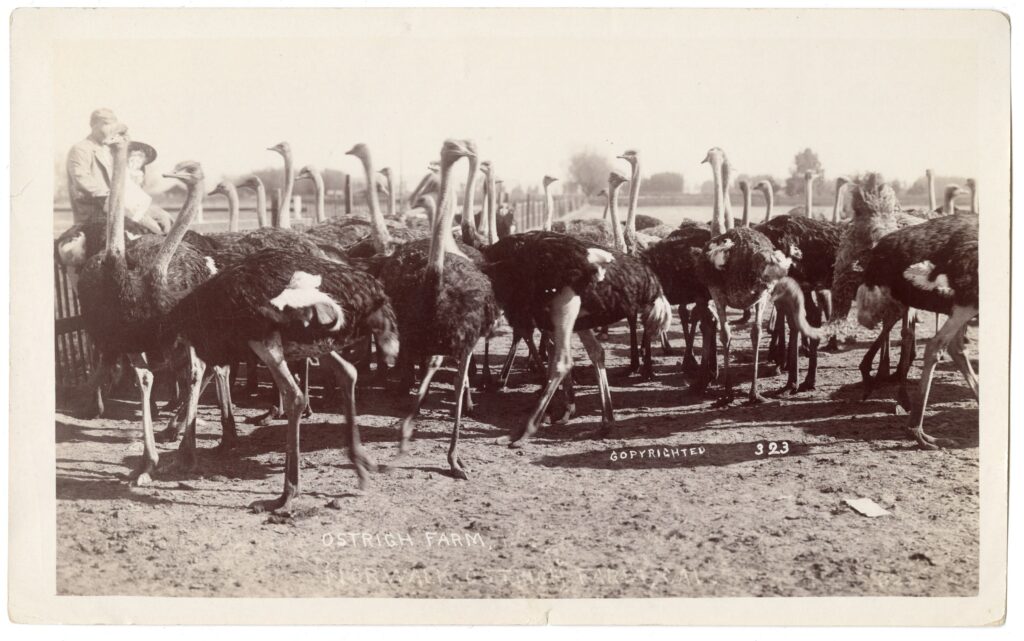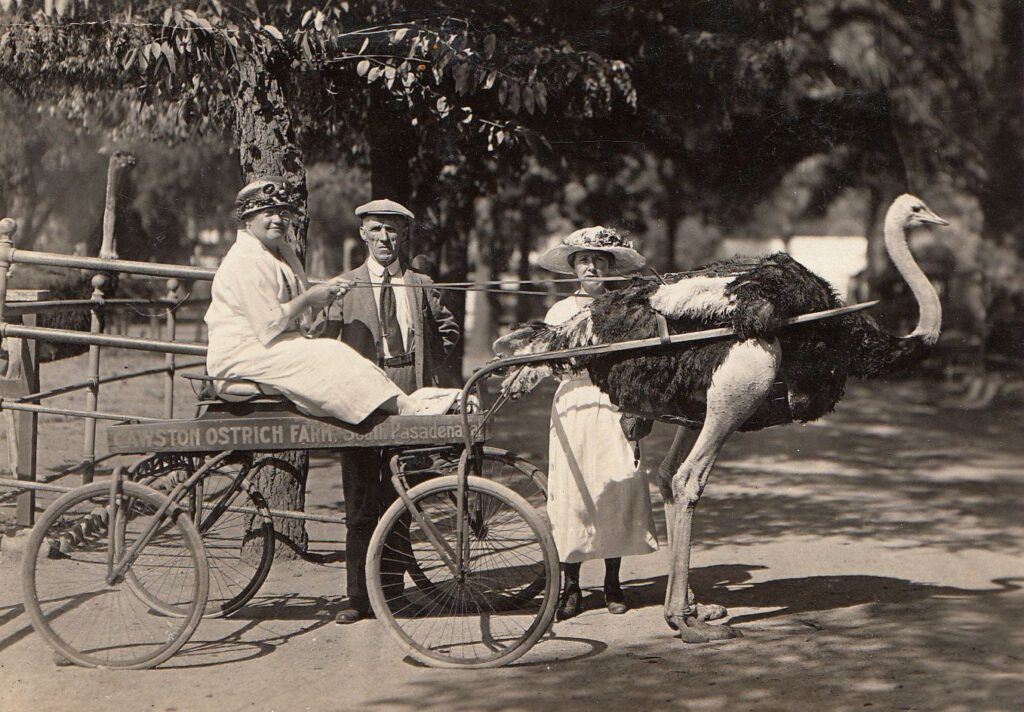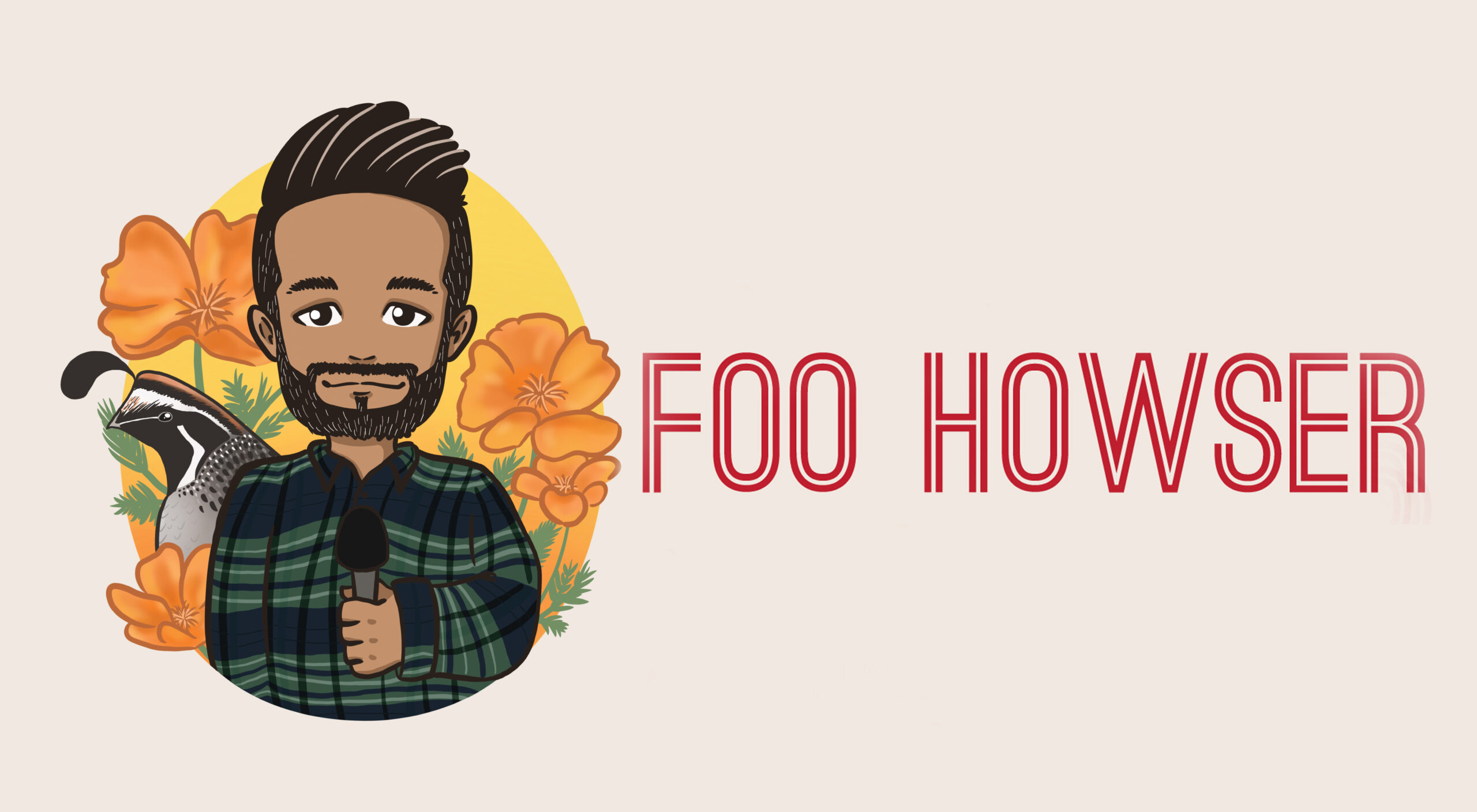Near the southeast corner of Pasadena and Sycamore Aves in the city of South Pasadena, sits a memorial to one of the Southland’s earliest tourist attractions. This plaque marks the former site of Cawston Ostrich Farm.

In 1886 English adventurer and world traveler Edwin Cawston embarked on his newest journey: Importing 50 African ostriches to California. Ostrich plumes were the must have trendy accessories of the Victorian era and Cawston was convinced that Southern California was the perfect place to cash in on the fashion craze. The weeks-long trip was grueling for the birds, after offloading them in Galveston Texas, they were put on train to Southern California. Of the 50 birds that started the trip, only 18 survived.
Cawston established the farm in Norwalk to breed the birds, raise chicks, and harvest their feathers; it was never meant to be a tourist attraction, but it drew lots of curious visitors. Wanting to provide a place for people to see the birds, Cawston and his partner Charles Fox established an exhibition ostrich farm at the Washington Gardens Amusement Park in current day downtown L.A. His stay there was brief as he had limited success with this venture and in 1888 moved the birds back to the Norwalk farm as he searched for a permanent location where visitors to see the ostriches up close, but without interfering with the day-to-day operations of the farm.

In 1896 he found that location in South Pasadena. This new property was designed to be tourist friendly and included gardens, a feather processing factory, retail store, and pens where visitors could see the ostriches up close and take pictures with them.
Cawston’s Ostrich Farm in South Pasadena quickly became one of the most popular tourist attractions in Southern California—it was so famous that it had its own stop on the Pacific Electric Railway. The farm also became renowned for its technological advancements when in 1901, it became home to the first successful commercial use of a solar powered motor.

The farm was also pivotal in forming the identity of the City of South Pasadena and its development—it put the city on the map and the tourists dollars infused the city’s coffers. Cawston himself paid a critical role in defeating a 1903 motion to change the name of the city; arguing that people from around the world knew his farm was located in South Pasadena and changing the name could negatively affect his business—so the name remains to this day.
Despite the success of his farm, Cawston began to spend more time away in England and by 1909 he had sold the Norwalk farm and moved those birds to San Jacinto. By 1911, he sold the San Jacinto and South Pasadena farms for $1.25 million (the equivalent of $32 million today ) and returned to England for good, where he passed away in 1920.
The South Pasadena farm continued to operate until 1935, but it was never as successful as it was during Cawston’s tenure. Even though Cawston only operated his Farm for 15 years, he left a lasting mark on the the city and he and his farm continue to be a huge part of its identity.
There is a street named named after Cawston just a few mins drive from the farm. Ostriches adorn the Farmer’s Market Tote bags. The library has a stuffed ostrich on display and a huge collection of farm photographs. The South Pasadena Historical Museum preserves and exhibits numerous artifacts from the Farm, including feathers, postcards, eggs, and souvenirs.

And on the site of the farm, next to the plaque, is a loft building aptly named “The Ostrich Farm” complete with illustrations of the birds on its glass doors and a statue out front. So there’s at least 3 ostriches still on the farm.
References:
“For the Birds: Edwin Cawston and the Farm That Invigorated Los Angeles” by Nicholas Beyelia, L.A. Public Library Blog. Dec. 3, 2019.
*Cawston Ostrich Farm: Accent on SoPas History” by Norma LeValley. South Pasadena Quarterly, Fall 1992.
“One of the Strangest Sights in America,” by Rick Thomas. The Quarterly, Summer 2001. “
“Throwback Thursday: The Solar Motor” by Rick Thomas. South Pasadenan, Feb. 22, 2018.
“Nothing New Under the Sun, Whether Solar Power or Ostrich Farms” by Alison Bell. The Los Angeles Times. April 24, 2011.

